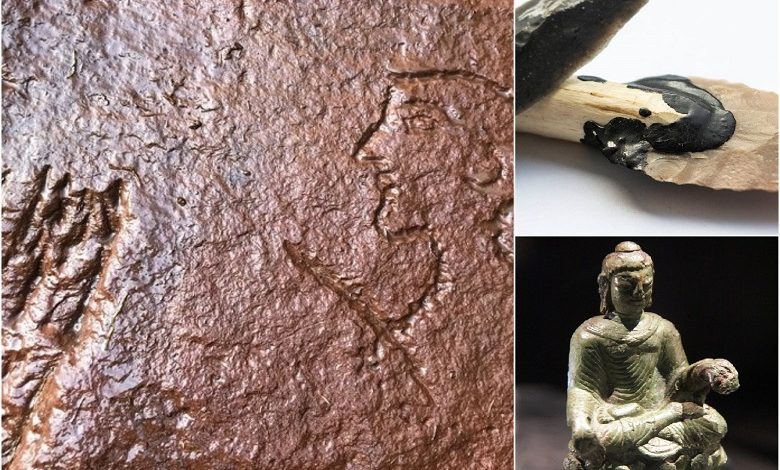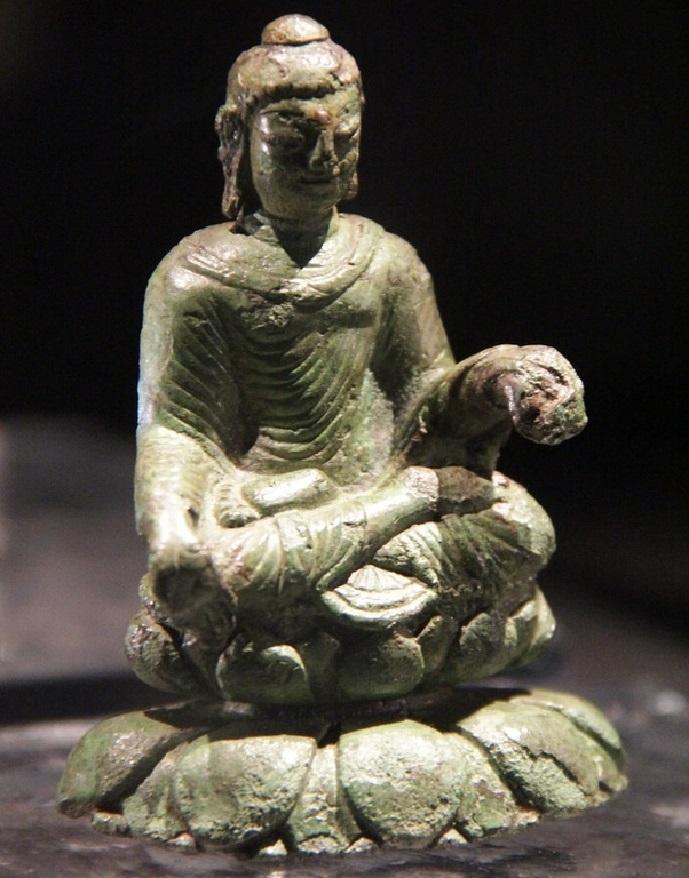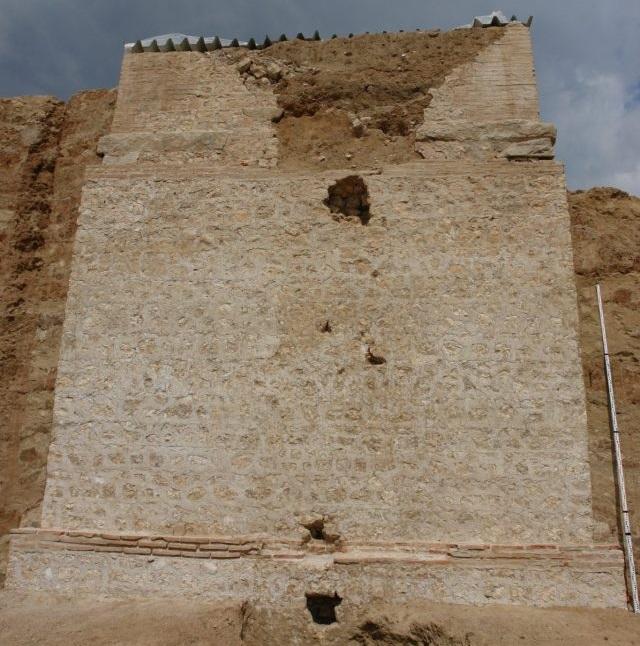Swedish Buddha, Written Rock Of Gelt: finds that changed history

The discovery of Swedish Buddha, the written rock of Gelt, and other archaeological finds that changed the way we look at the history
Archaeological discoveries often become the centre of attention and attract the public’s attention like no other science. Even just one archaeological find can completely “cross out” an entire generation of academic works, making them obsolete. And some of the finds are so bizarre that they can completely change the way we look at history.
Swedish Buddha

It is now broadly known that the Vikings were prolific merchants, holding trading posts from Ireland to Russia and reaching markets in Baghdad and Egypt. However, nothing defines the enterprising Viking spirit better than a series of finds on Helgo Island in Sweden. Helgo was the site of a busy Viking trading post for much of the early Middle Ages, and items from around the world ended up there during that time.
Among the finds were a Buddha statue, the top of an Irish bishop’s staff, and a spoon from North Africa. The ladle and bishop’s staff were presumably captured during raids because the Vikings often plundered in Ireland and Egypt, but the Buddha statue must have been exchanged. Made in Kashmir, India, around the 60th century, the figure was probably bought somewhere along the trade route between the Middle East and Russia, where enterprising Vikings often travelled to trade, raid, or even join the Varangian Guard in Constantinople. The unusual statue was most likely taken back to Helgo and sold to a resident.
The find confirmed what some historians suspected: Viking trade routes extended much further than recently thought. Although they probably did not travel to the markets of India, they often traded with the Arabs, who in turn would have traded with India.
The Written Rock Of Gelt

In the early 200s, Roman soldiers worked in a quarry in Cumbria, collecting stones to construct Hadrian’s Wall. While they were there, they carve to leave behind a memory, carving messages in stone. These inscriptions were officially discovered in the 1500s by William Camden, one of the earliest modern historians, and Julius Cotton.
After that, the site that became known as the “The written Rock of Gelt” was mentioned several times during the 1700s and 1800s. But the graffiti was never properly documented. Since then, erosion has damaged some of the messages, rendering some of them illegible.
The site was easily accessible to the public until the road collapsed in the 1980s. Now it is almost impossible to get to it. The rock was recently visited by archaeologists from the University of Newcastle, who had to descend 9 meters to reach it. Fearing that the unique graffiti would be destroyed due to erosion, archaeologists made 3D models of them so that future historians could study the inscriptions.
The tomb of Philip the Arab

The story of a Roman-era tomb discovered in 2018 becomes stranger the more you read into it. The landscape of modern Bulgaria is dominated by mounds, some as high as hills and visible from great distances.
Recently, these monuments have been plagued by treasure hunters who have been digging into them, taking the remains left inside and selling them on the black market trade, worth an estimated $1 billion a year. As a result, legitimate archaeologists in Bulgaria have stepped up their efforts to excavate and protect old monuments, remove archaeological value finds, and take them to museums where they can be preserved.
When the team began excavating the mound of Maltepe, the most giant mound in Bulgaria, they discovered something perhaps far more valuable: a massive mausoleum from the Roman era. The team is now close to completing the excavation of the entire southern side. They now believe they have discovered the tomb of the Roman emperor Philip the Arab and expect it to become a site of world significance eventually. They intend to excavate the entire structure, a process that will require government funding. Because of the age of the design, it will almost certainly require reinforcement to stand on its own.
When they excavated it, no doubt some team members became excited at the prospect of finding Roman-era treasures. Their hopes must have been dashed when they discovered the remains of a 40-meter (131-foot) treasure hunter tunnel that runs directly under the tower’s southeast corner.
The team leaders said they expected to find things like cigarette butts and batteries in such tunnels. However, in this tunnel, they found animal manure and coins from the reign of Sultan Suleiman the Magnificent. These treasure hunters dug this tunnel in the 1500s. Fortunately, the adventurers do not seem to have succeeded in robbing the tomb. Archaeologists found coins and pottery dating back to the 200s, but it was certainly an unusual find.
Ancient Egyptian Tobacco

One of the strangest archaeological discoveries of the past few decades occurred in Munich, Germany, in 1992. Dr Sveta Balabanova performed a chemical test on some ancient Egyptian mummies belonging to the King of Bavaria. To her surprise, she found traces of nicotine and cocaine on them. In ancient times, both drugs could only be found in North and South America.
Since then, various hypotheses have emerged to try to explain how these traces ended up there. The most plausible one was that the ancestors of the drugs existed in Eurasia at the time but died out before our time, like the ancient Roman drug Silphium.
However, more recent research has shown that the ancient Egyptians may have had the maritime ability to reach the Americas theoretically. Archaeological finds and antique images from Hatshepsut’s voyage to the country of Punt have revealed a sophisticated naval infrastructure, including harbours, building materials, and the remains of the oldest sea ships ever found.
Modern images of Egyptian ships show ships over 21 meters (70 feet) long, carrying over 200 sailors and goods that could only be found along the African coast. This revealed Ancient Egypt’s ability to trade over long distances. There is another tantalizing clue. In 1909, the Arizona Gazette reported that two researchers funded by the Smithsonian Institution had discovered caves in America with Egyptian-style artefacts. However, no evidence exists today, and the Smithsonian Institution has no record of such discovery ever being reported by any of their researchers. At this point, this archaeological discovery remains a mystery.
Neanderthal glue

For an extended period, it was thought that Neanderthals weren’t as intelligent or evolved as Homo sapiens, but recent discoveries have turned that assumption upside down. In June 2019, archaeologists discovered evidence that Neanderthals used a primitive type of glue on their tools. The finds are between 55,000 and 40,000 years old, making them some of the oldest examples of glue used to assemble human tools.
The glue appears to have been made primarily of pine resin, but sometimes it also contained beeswax. The resin was cooked over a high fire as part of making organic glue, which was used to cover a notch in the wood shaft. A flint blade was then inserted into the aperture and secured in place. This is not the first finding of its kind, and it helps reinforce the belief that this practice was widespread among these early people. It also means that there is now more evidence that Neanderthals could create fires as a needed-another issue that has been the subject of much debate over the years.




